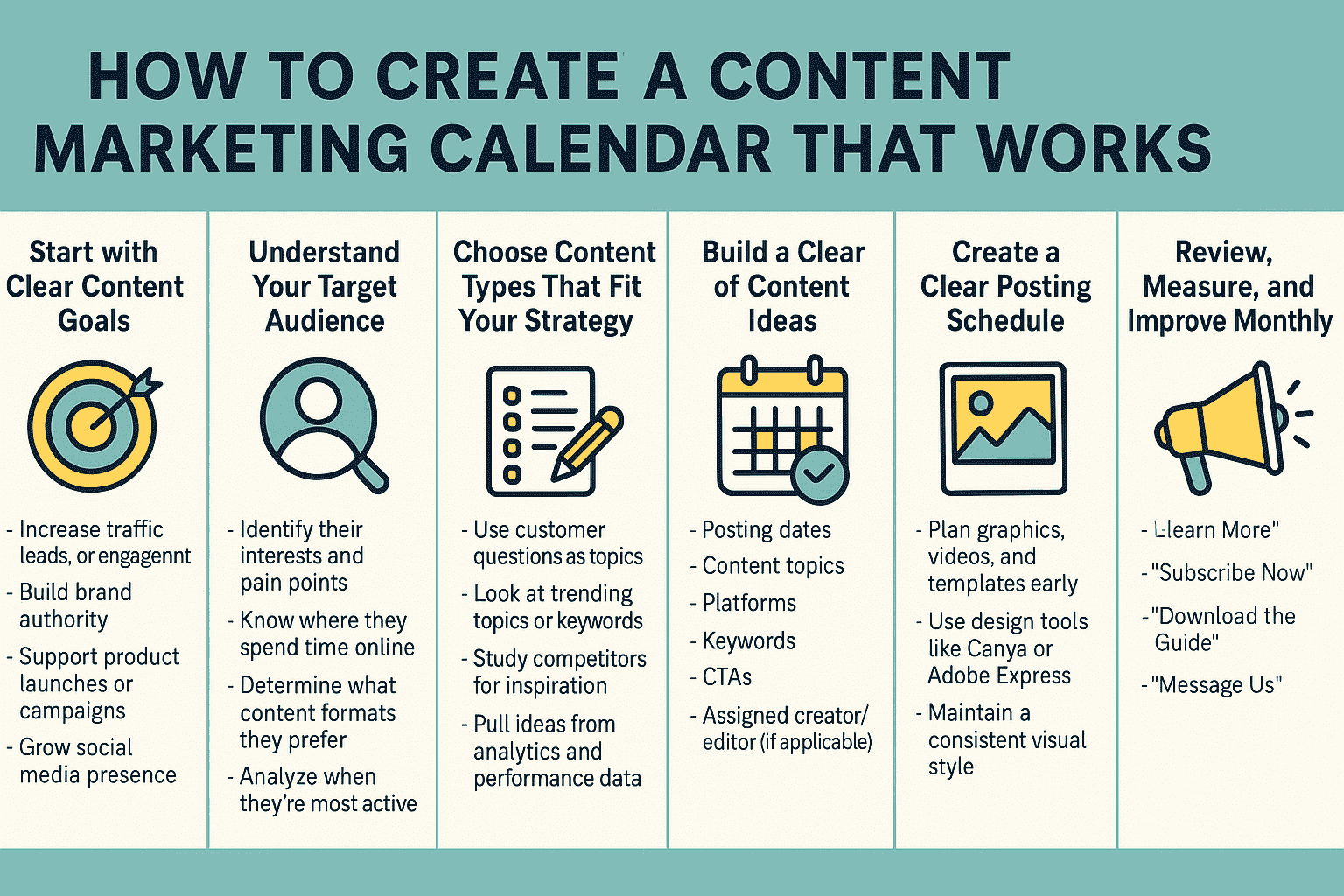Your content calendar can solve chaos. Learn how to plan posts that support your real goals.
A successful content strategy doesn’t happen by accident — it comes from smart planning. A content marketing calendar helps you stay organized, consistent, and strategic with every post you publish. Whether you’re running a blog, managing social media, or planning marketing campaigns, a well-designed content calendar is the backbone of smooth execution.
Here’s how to build one that truly delivers results.
🎯 1. Start With Clear Content Goals
Before scheduling anything, define what you want to achieve.
Brief Key Points:
- Increase traffic, leads, or engagement
- Build brand authority
- Support product launches or campaigns
- Grow social media presence
👉 Why it matters: Goals help you plan content that actually supports business growth.
👥 2. Understand Your Target Audience
Your calendar must be built around who you’re trying to reach.
Brief Key Points:
- Identify their interests and pain points
- Know where they spend time online
- Determine what content formats they prefer
- Analyze when they’re most active
👉 Insight: Content works best when it aligns with audience behavior.
✍️ 3. Choose Content Types That Fit Your Strategy
Mixing formats keeps your audience engaged and your content fresh.
Content options:
- Blog posts
- Reels and short videos
- Infographics
- Emails
- Tutorials
- Case studies
- Product or service highlights
👉 Tip: Use a balanced mix of educational, engaging, and promotional content.
🗂 4. Build a Bank of Content Ideas
Brainstorming ahead prevents last-minute stress and improves creativity.
Brief Key Points:
- Use customer questions as topics
- Look at trending topics or keywords
- Study competitors for inspiration
- Pull ideas from analytics and performance data
👉 Pro Tip: Keep all ideas in one place (Google Sheets, Notion, Trello).
📆 5. Create a Clear Posting Schedule
This is where your calendar takes shape — structured, simple, and consistent.
Include in your schedule:
- Posting dates
- Content topics
- Platforms
- Keywords
- CTAs
- Assigned creator/editor (if applicable)
👉 Best Practice: Start with a weekly schedule and scale up gradually.
🎨 6. Prepare Visual Content in Advance
Good visuals improve engagement and save time during publishing.
Brief Key Points:
- Plan graphics, videos, and templates early
- Use design tools like Canva or Adobe Express
- Maintain a consistent visual style
👉 Reminder: Strong visuals make your brand look professional and trustworthy.
📣 7. Add Clear CTAs (Call-to-Actions)
Every piece of content should guide users toward something.
Effective CTAs:
- “Learn More”
- “Subscribe Now”
- “Download the Guide”
- “Message Us”
👉 Reason: CTAs turn passive viewers into active leads.
📊 8. Review, Measure, and Improve Monthly
A calendar is only effective when it evolves with performance insights.
Track these metrics:
- Views and reach
- Engagement
- Click-through rate
- Conversions
- Top-performing content
👉 Outcome: You learn what works and refine what doesn’t.
🌟 Final Thoughts
A great content marketing calendar keeps your team organized, your messaging consistent, and your strategy purposeful. By setting clear goals, knowing your audience, and scheduling content thoughtfully, you create a workflow that’s easier to manage — and far more effective.
Start simple, stay consistent, and adjust your calendar monthly for long-term success.

Leave a Reply